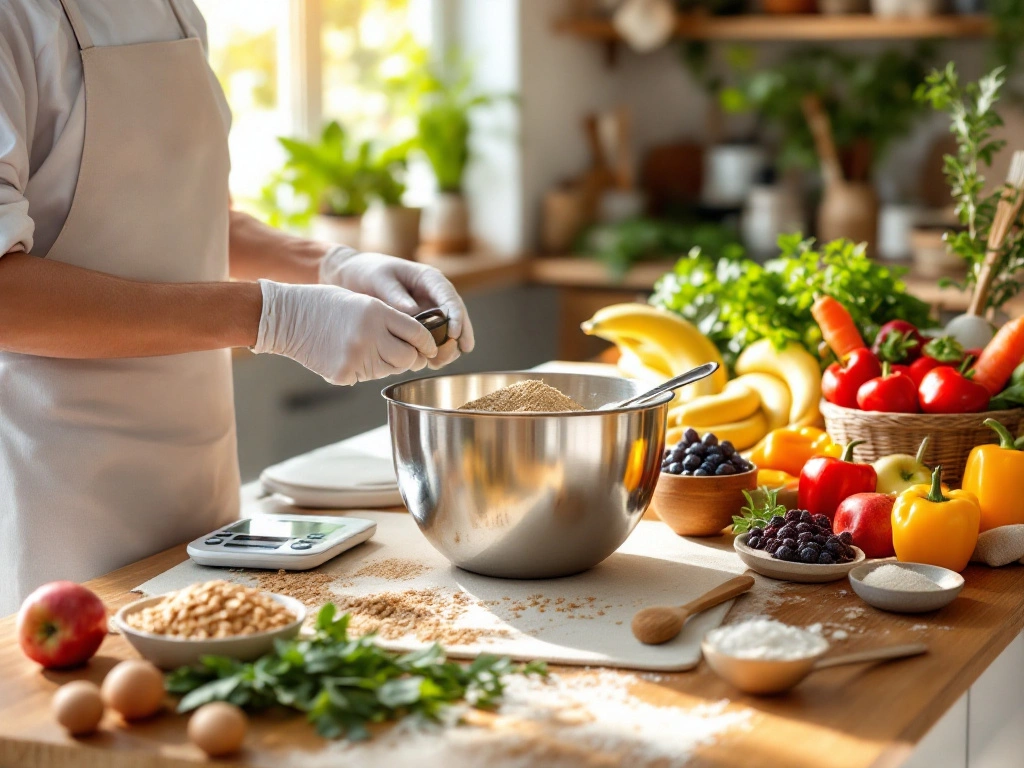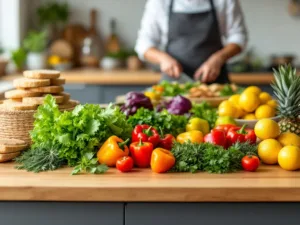How to Choose Healthy Cooking Methods for Fish and Seafood: A Comprehensive Guide to Maximizing Nutrition and Flavor
Introduction
Fish and seafood are among the most nutritious foods available, packed with high-quality protein, essential omega-3 fatty acids, vitamins, and minerals. However, the way you cook these delicate ingredients can significantly impact their nutritional value, flavor, and overall health benefits. Whether you’re a seasoned chef or a home cook, understanding how to choose healthy cooking methods for fish and seafood is crucial for maintaining their nutritional integrity while creating delicious meals. This article will explore the best cooking techniques, their benefits, and practical tips to help you make informed decisions in the kitchen.
The Nutritional Benefits of Fish and Seafood
Before diving into cooking methods, it’s essential to understand why fish and seafood are considered nutritional powerhouses. They are rich in:
- Omega-3 Fatty Acids: Essential for heart health, brain function, and reducing inflammation.
- High-Quality Protein: Supports muscle repair, immune function, and overall growth.
- Vitamins and Minerals: Including vitamin D, B vitamins, iodine, selenium, and zinc.
- Low in Saturated Fat: Making them a heart-healthy protein source.
However, improper cooking methods can degrade these nutrients, add unnecessary calories, or even introduce harmful compounds. Therefore, selecting the right cooking technique is paramount.
Key Factors to Consider When Choosing Cooking Methods
When deciding how to cook fish and seafood, consider the following factors:
- Nutrient Retention: Some methods preserve nutrients better than others.
- Flavor and Texture: Different techniques can enhance or diminish the natural taste and texture of seafood.
- Healthiness: Avoid methods that add excessive fat, sodium, or harmful compounds.
- Convenience: Choose methods that fit your time constraints and kitchen equipment.
With these factors in mind, let’s explore the healthiest cooking methods for fish and seafood.
1. Steaming: A Gentle and Nutrient-Preserving Method
Why Steaming is Healthy
Steaming is one of the best methods for cooking fish and seafood because it uses minimal fat and retains most of the nutrients. The gentle heat ensures that delicate proteins and omega-3 fatty acids remain intact.
How to Steam Fish and Seafood
- Use a steamer basket or bamboo steamer over boiling water.
- Season the fish with herbs, lemon, or spices for added flavor.
- Steam for 5–10 minutes, depending on the thickness of the fillet or shellfish.
Practical Tips
- Avoid overcooking to prevent dryness.
- Add aromatic ingredients like ginger, garlic, or lemongrass to the steaming water for extra flavor.
Example Recipe
Steamed Salmon with Ginger and Soy Sauce: Place salmon fillets in a steamer basket, top with sliced ginger, and drizzle with a light soy sauce mixture. Steam for 8–10 minutes and garnish with green onions.
2. Grilling: A Flavorful and Low-Fat Option
Why Grilling is Healthy
Grilling imparts a smoky flavor without the need for added fats. It also allows excess fat to drip away from the fish, reducing calorie intake.
How to Grill Fish and Seafood
- Preheat the grill to medium-high heat.
- Brush the fish lightly with oil to prevent sticking.
- Grill for 3–5 minutes per side, depending on thickness.
Practical Tips
- Use a grill basket or foil packet for delicate fish to prevent it from falling apart.
- Marinate fish beforehand to enhance flavor and moisture.
Example Recipe
Grilled Shrimp Skewers: Marinate shrimp in olive oil, garlic, and paprika, then thread onto skewers. Grill for 2–3 minutes per side until pink and opaque.
3. Baking: A Simple and Versatile Technique
Why Baking is Healthy
Baking requires little to no added fat and allows for even cooking. It’s an excellent method for retaining moisture and nutrients.
How to Bake Fish and Seafood
- Preheat the oven to 375°F (190°C).
- Place the fish in a baking dish and season with herbs, lemon, or a light sauce.
- Bake for 15–20 minutes, depending on the type and thickness of the fish.
Practical Tips
- Cover the fish with foil to lock in moisture.
- Add vegetables to the baking dish for a complete meal.
Example Recipe
Baked Cod with Tomatoes and Olives: Place cod fillets in a baking dish, top with sliced tomatoes, olives, and a drizzle of olive oil. Bake for 15 minutes.
4. Poaching: A Low-Calorie and Delicate Method
Why Poaching is Healthy
Poaching involves cooking fish in simmering liquid, which keeps it moist and tender without adding fat. It’s ideal for delicate fish like cod or sole.
How to Poach Fish and Seafood
- Use a flavorful liquid like broth, wine, or water with herbs and spices.
- Bring the liquid to a gentle simmer and add the fish.
- Cook for 5–10 minutes until the fish is opaque and flakes easily.
Practical Tips
- Avoid boiling the liquid, as it can toughen the fish.
- Use the poaching liquid as a base for a light sauce.
Example Recipe
Poached Halibut in White Wine: Simmer halibut fillets in a mixture of white wine, garlic, and thyme for 8–10 minutes. Serve with a drizzle of the reduced poaching liquid.
5. Sautéing: A Quick and Flavorful Option
Why Sautéing is Healthy
When done correctly, sautéing can be a healthy method that uses minimal oil and cooks fish quickly to retain nutrients.
How to Sauté Fish and Seafood
- Heat a small amount of oil or butter in a skillet over medium-high heat.
- Cook the fish for 2–4 minutes per side, depending on thickness.
Practical Tips
- Use a non-stick pan to reduce the need for oil.
- Add vegetables to the pan for a one-pan meal.
Example Recipe
Sautéed Scallops with Spinach: Sear scallops in olive oil for 2 minutes per side, then add spinach to the pan and cook until wilted.
6. Raw Preparations: Maximizing Nutrient Retention
Why Raw Preparations are Healthy
Eating fish and seafood raw, as in sushi or ceviche, preserves all their natural nutrients. However, it’s crucial to use high-quality, sushi-grade fish to avoid foodborne illnesses.
How to Prepare Raw Fish and Seafood
- Ensure the fish is fresh and sourced from a reputable supplier.
- Use acidic ingredients like lime or lemon juice to “cook” the fish in ceviche.
Practical Tips
- Freeze fish before consuming raw to kill potential parasites.
- Pair raw fish with fresh vegetables and whole grains for a balanced meal.
Example Recipe
Shrimp Ceviche: Marinate raw shrimp in lime juice, diced tomatoes, onions, and cilantro until the shrimp turns opaque.
Cooking Methods to Avoid or Use Sparingly
While some methods are healthier than others, certain techniques should be avoided or used sparingly due to their potential health risks:
- Deep-Frying: Adds excessive calories and unhealthy fats.
- Pan-Frying: Can be high in fat if too much oil is used.
- Smoking: May introduce harmful compounds like polycyclic aromatic hydrocarbons (PAHs).
If you do use these methods, opt for healthier alternatives like air-frying or using minimal oil.
Final Tips for Choosing Healthy Cooking Methods
- Match the Method to the Fish: Delicate fish like sole or flounder are best steamed or poached, while firmer fish like salmon or tuna can handle grilling or baking.
- Use Healthy Fats: When sautéing or baking, choose heart-healthy oils like olive or avocado oil.
- Avoid Overcooking: Overcooked fish loses moisture and nutrients. Aim for a tender, flaky texture.
- Experiment with Flavors: Use herbs, spices, and citrus to enhance flavor without adding salt or unhealthy sauces.
Conclusion
Choosing healthy cooking methods for fish and seafood is essential for maximizing their nutritional benefits and enjoying their natural flavors. Steaming, grilling, baking, poaching, and sautéing are all excellent options that preserve nutrients and minimize added fats. By understanding the strengths of each method and tailoring them to the type of fish or seafood you’re preparing, you can create delicious, healthful meals that support your overall well-being.
Remember, the key to healthy cooking lies in balance and mindfulness. Experiment with different techniques, flavors, and ingredients to discover what works best for you. Whether you’re preparing a quick weeknight dinner or an elaborate feast, the right cooking method can make all the difference in transforming fish and seafood into a nutritious and satisfying meal.









Add comment